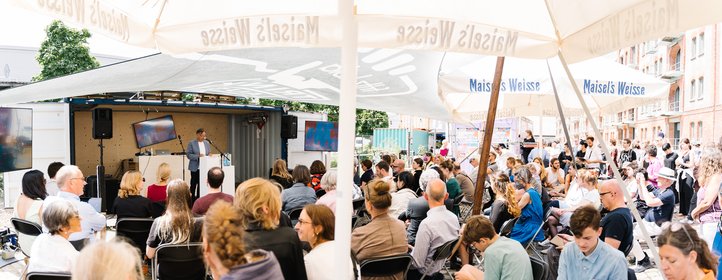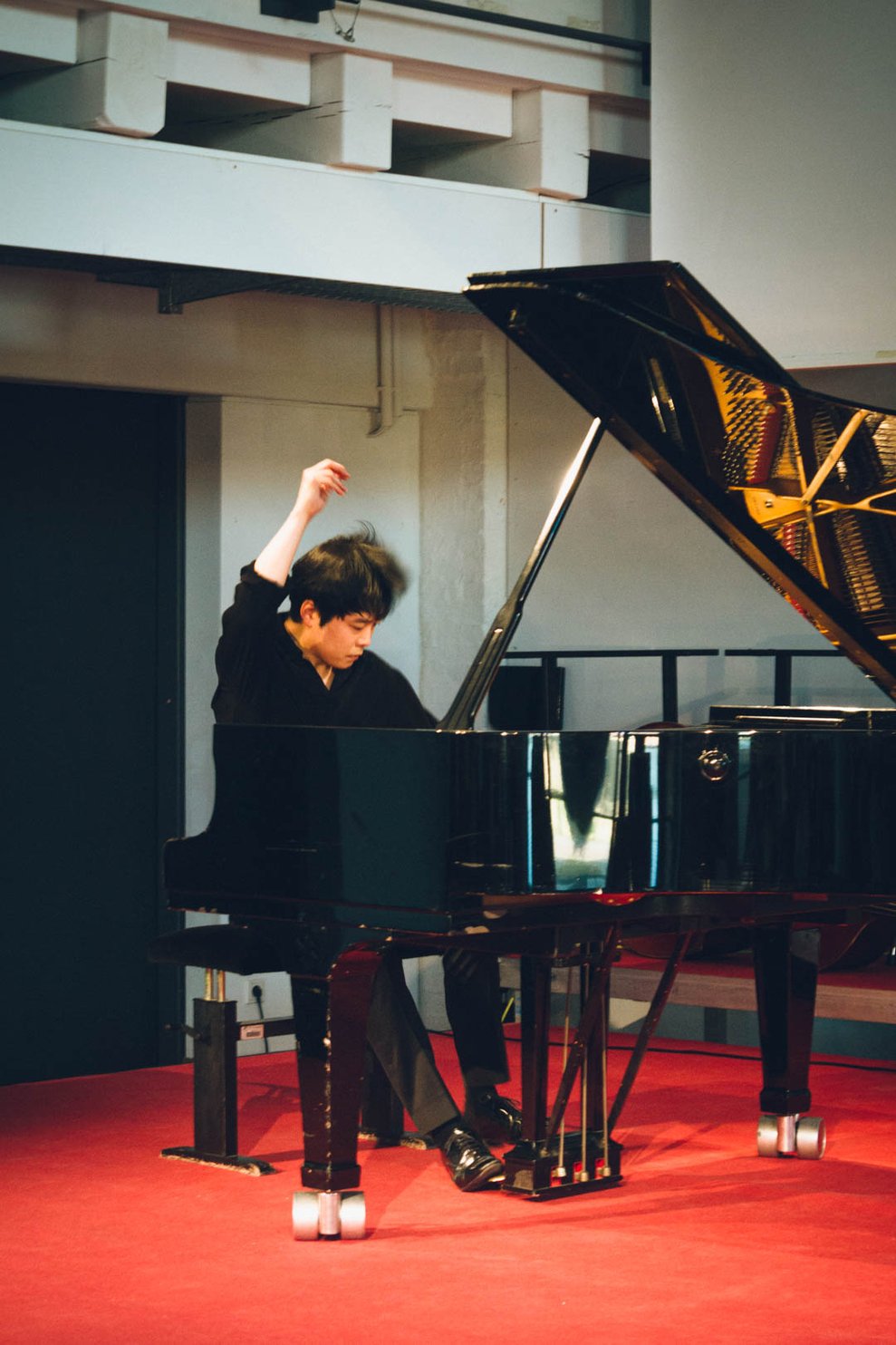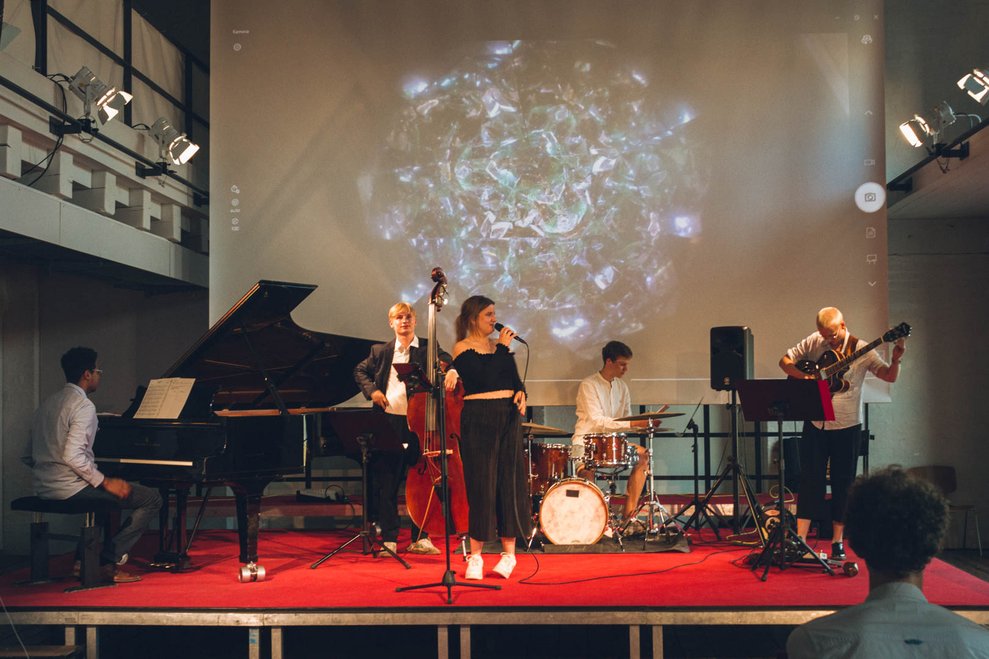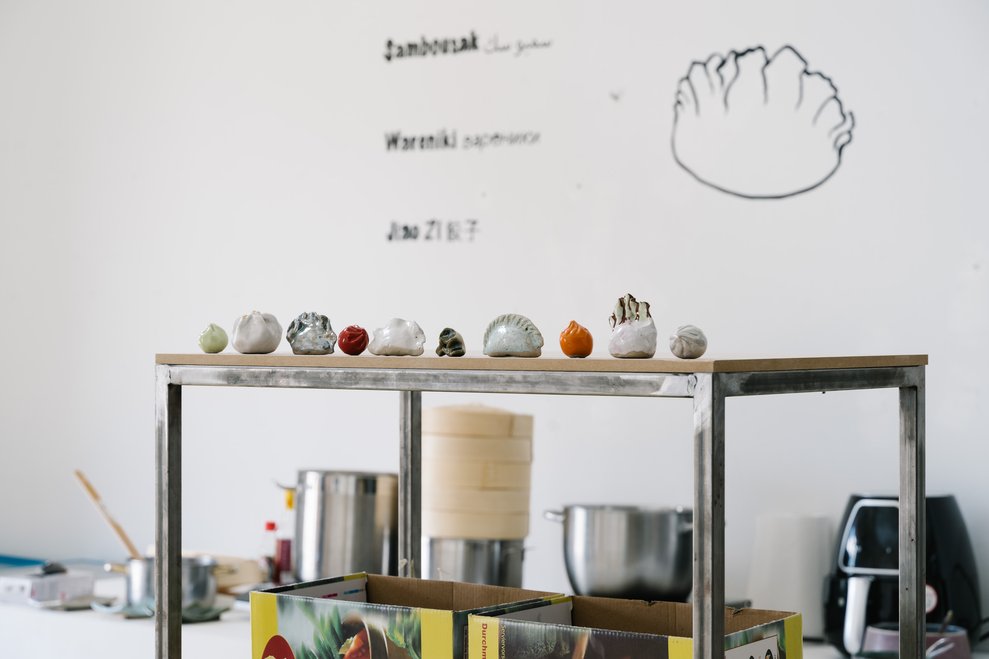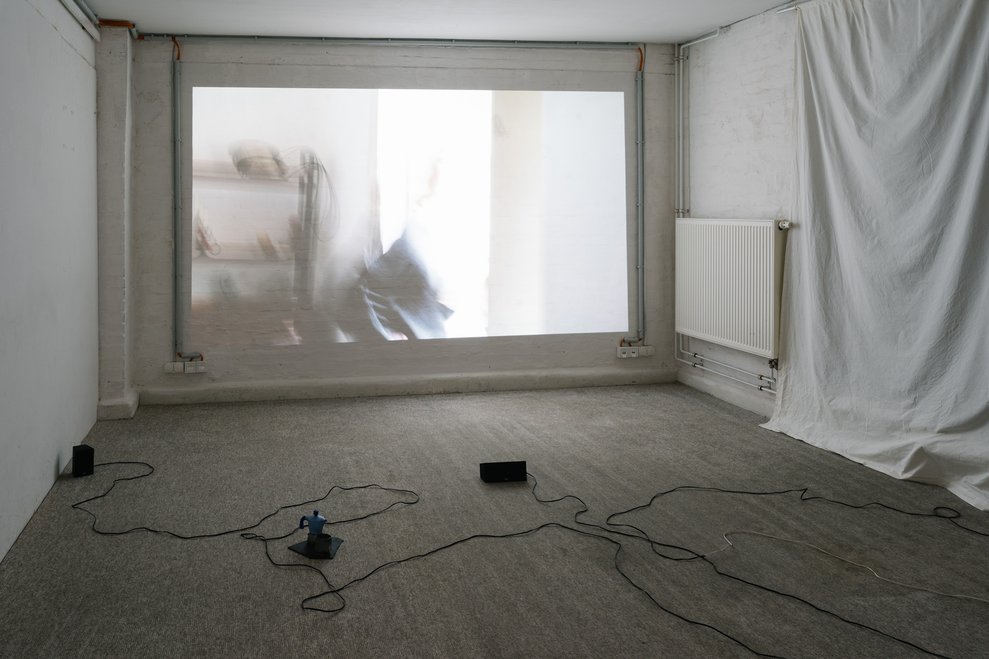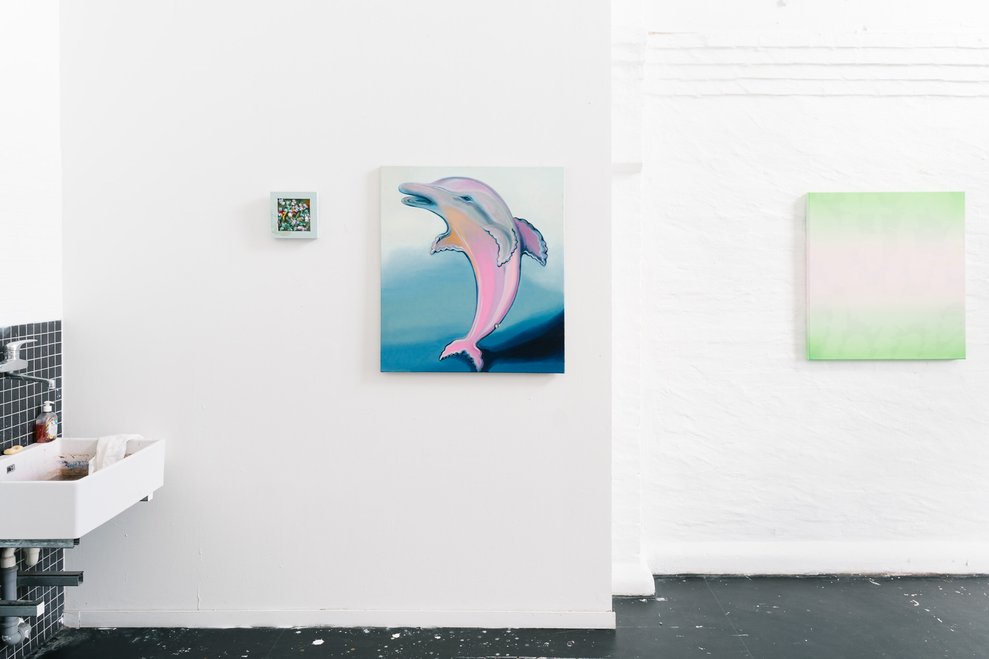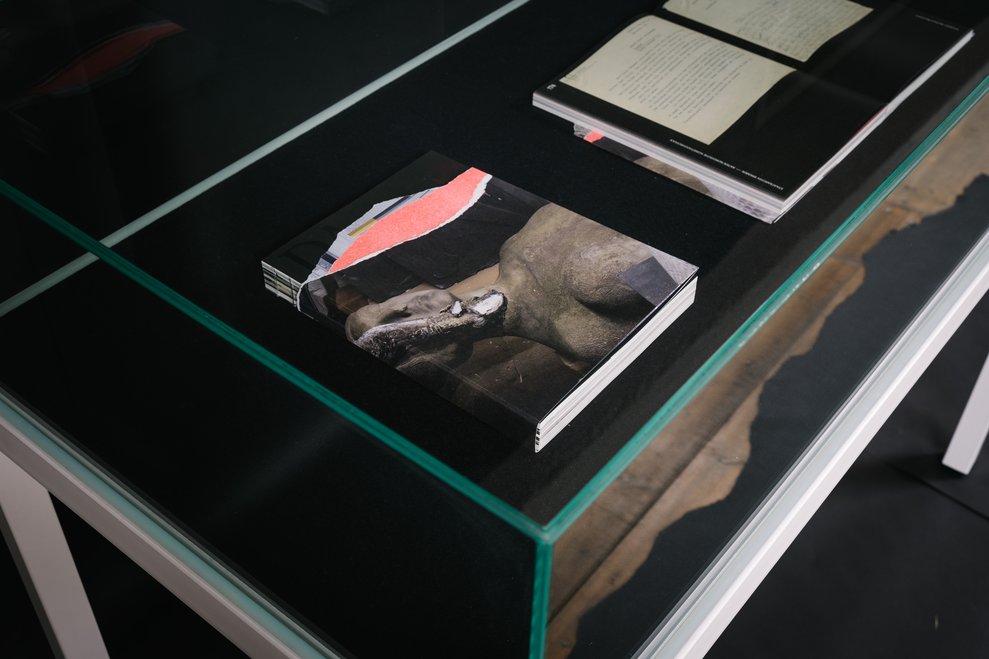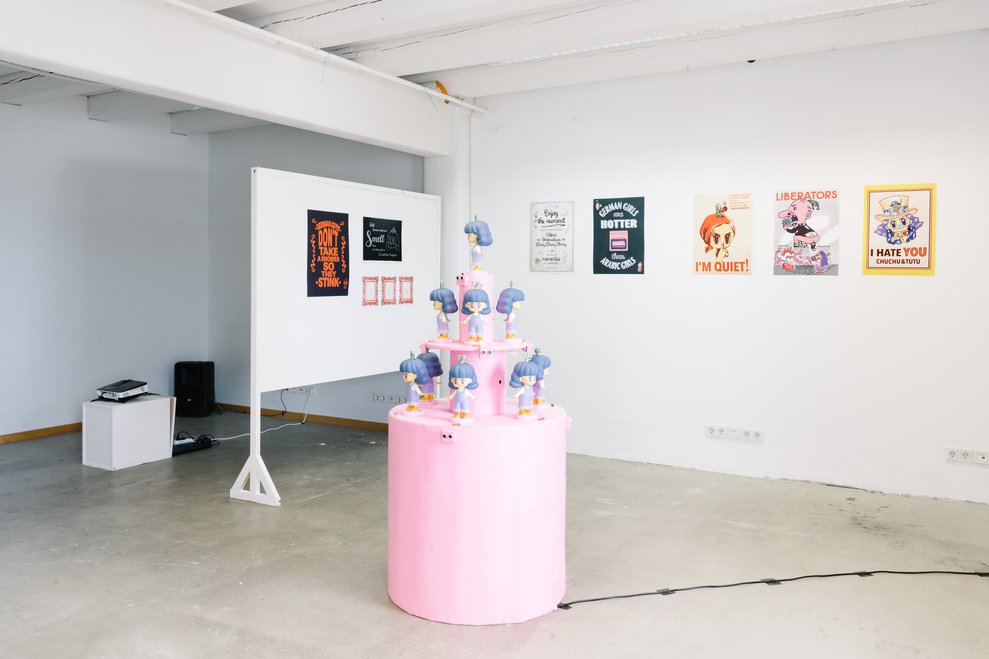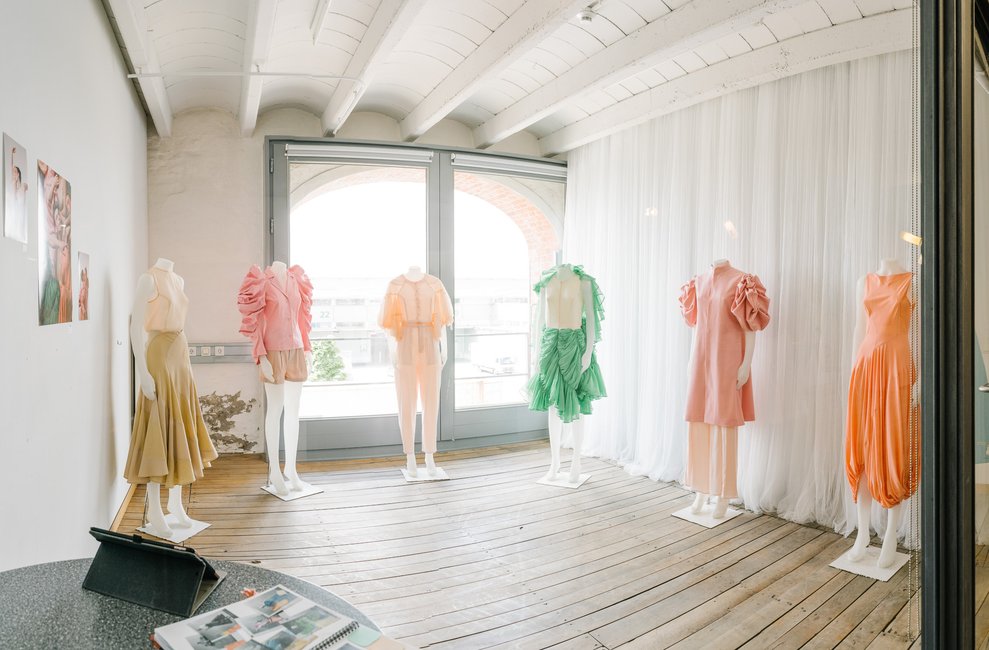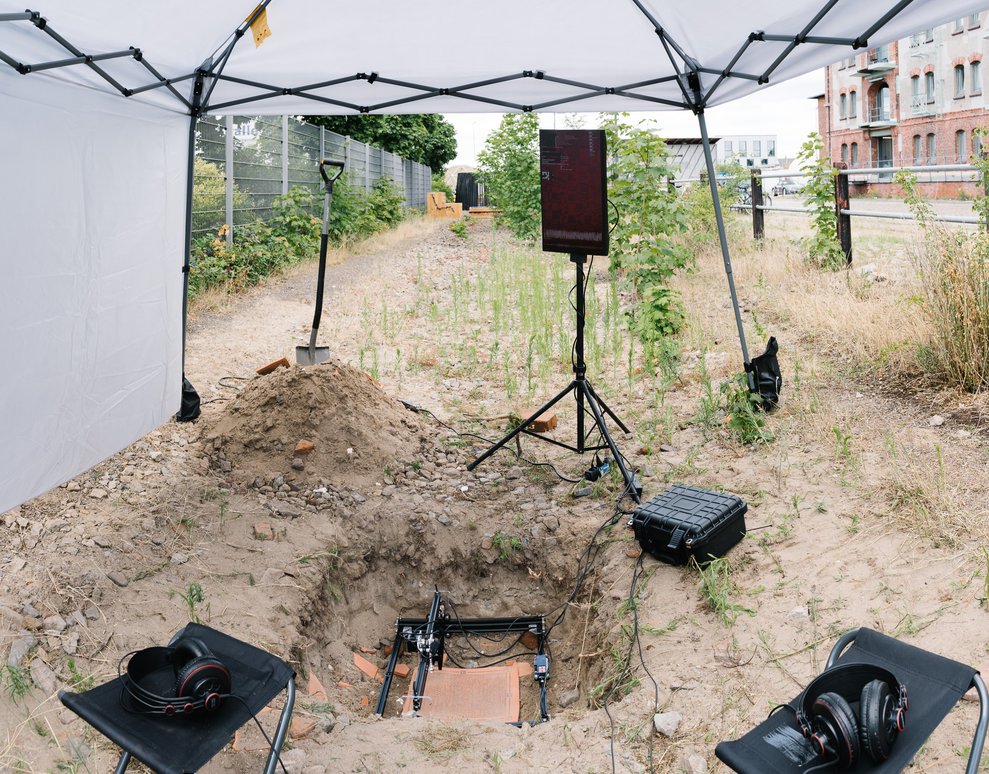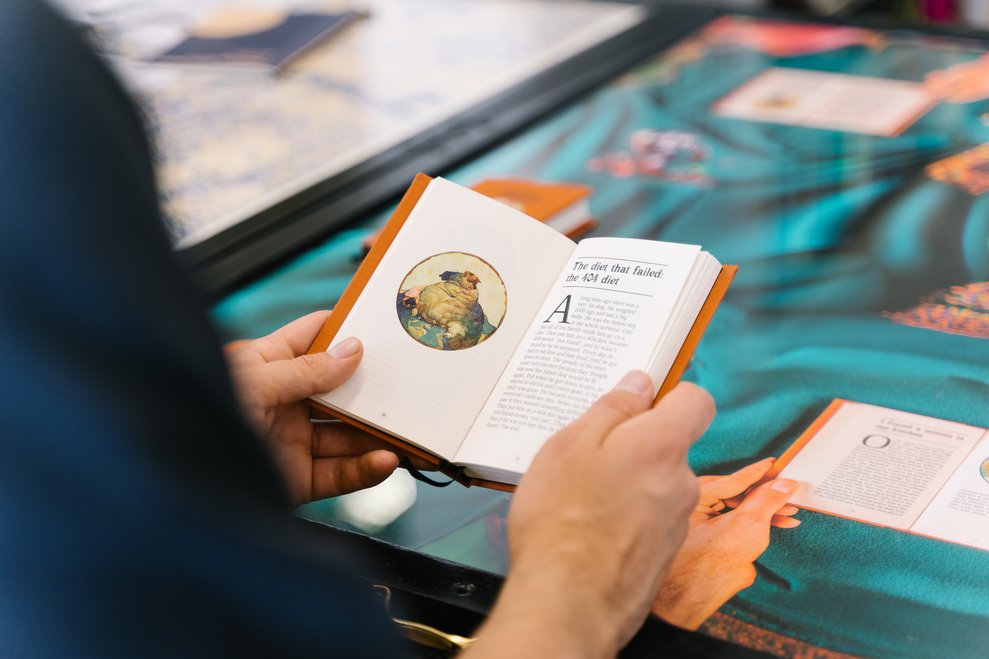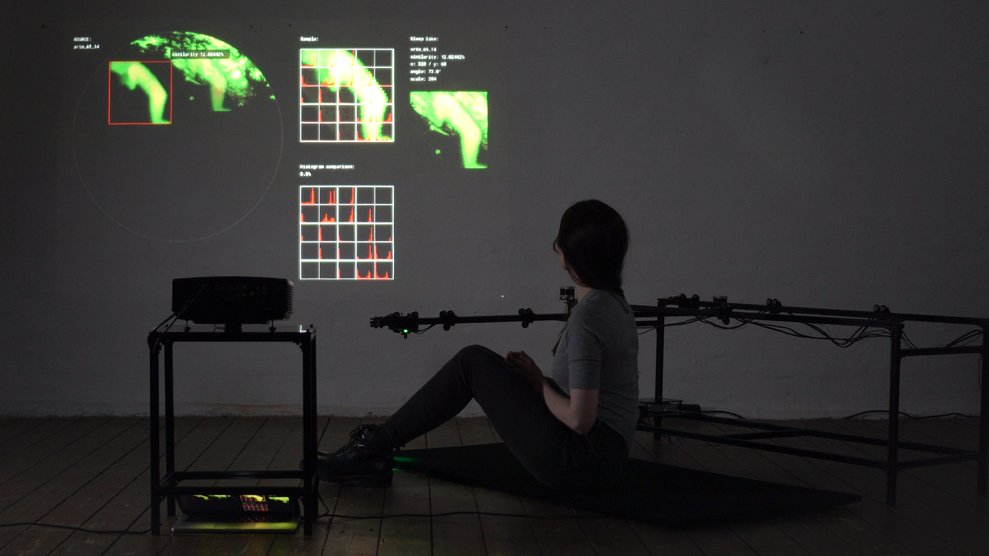A weekend under the auspices of the arts, design and music: On Saturday, July 2, and Sunday, July 3, Hochschule für Künste (HfK), Bremen’s University of the Arts, held their Open House days in the studios, workshops and galleries at Speicher XI, as well as outside and around the building.
More than 4000 visitors expressed interest in the projects, works and concerts created by students at the University of the Arts Bremen to tackle contemporary issues of concern for the arts, design and society in general, while providing access to the rich variety of their creative processes and research.
Audiences experienced exhibits, installations, performances, presentations, films, video art and musical performances. Around 250 guests participated out doors at the opening ceremony on Saturday afternoon on July 2, among them numerous representatives of politics, culture and business.
The Rector of the HfK, Professor Roland Lambrette, dedicated the Open House days to the real estate developer and philanthropist Klaus Hübotter, who has saved Speicher XI from demolition, repurposed the building to serve the arts and rebuild the facility to house the HfK. He capped out his engagement by intiating the development of Speicher XI A. Lambrette pointed out: “We owe a great deal of gratitude to Klaus Hübotter and his family and will commemorate and honour his contributions.” Lambrette characterised the HfK as a lively place for interdisciplinary efforts imbued with a critical and attentive culture for discourse and debates that has assumed important, societal roles in our globalised world, as well as with the City State of Bremen.
Among the highlights of the opening event were the dedications of the University Awards for 2022 to students and graduates of the HfK for their outstanding efforts in the fine arts, music and design.
As the winner of the H.-A.-Bockmeyer Fellowship for Travelling, Ren Evora presented her project “Rivers,” an installation combining video projections, ink drawings and paper objects. As a student at the faculty for Integrated Design, the artist used her fellowship to sojourn up the river Weser and around the Bremen region, an area she has known well but had not really examined with open eyes before. Those excursion opened a space to engage with the (cultured) landscape, her own perceptions, as well as the media she has come to use (video, drawing, objects) and the resonances emerging among these elements. What kind of connections are present among perception, gaze, projection, senses and materials? According to Ren Evora, “Rivers” examines “immersion and distance, familiarity and the alien, inside and outside.” She sees her work as a “means to approach the relationship between a subject to their surroundings and themselves.”
Overview on categories and winners
Music – Soloartists
Pianist Beor Lee
(class taught by Prof. Patrick O'Byrne)
Verdict of the Jury: The pianist Beor Lee impressed by his variegated repertoire that is also rich with contrasts. During the first section he performed a sonata by Haydn with much esprit, wit and exactitude. He mastered the lyrical as well as the powerful virtuoso sections in the same effortless manner. Moving on to a Nocturne by Gabriel Faure, he fully satisfied with an exceptional control of his tone all the way to the most extreme pianissimo. During the second section he especially enthralled us with his performance of the “Danse macabre” by Franz Liszt in the arrangement by Horowitz. Beor Lee has mastered this highly challenging piece in a virtuoso fashion!
Music – Ensemble
Qunitett Klaire
Klara Schwabe: Jazz vocals (class taught by Romy Camerun)
Lea Baciulis: Jazz guitar (class taught by Andreas Wahl)
Yonathan Ghebretensae: Piano (class taught by Elmar Braß)
Magnus Bodzin: Acoustic bass (class taught by Prof. Markus Schieferdecker)
Elias Schlieper: Drums (class taught by Christian Schoenefeldt)
Verdict of the Jury: Quintett Klaire creates excitement by the balanced quality of their sound as the voices of instruments and singers melt into an harmonious whole. The five musicians furthermore delivered a compelling performance defined by strong energy on their instruments, rhythmical precision and interactions that were exactly timed. They performed a fantastic set of tunes and arrangements by Cole Porter, Chick Corea and Bill Evans, among others, with a whole lot of groove, swing, wit and melancholy: highly varied and really cool!
Jury: Jörg Birkenkötter (HfK-Professor for Composition), Hille Perl (Professorin for Viola da Gamba), Markus Schieferdecker (HfK-Professor for Jazz-Acoustic Bass), Stefan Veselka (HfK-Professor for Directing Orchestras/Ensembles), Artem Yasynskyy (HfK Alumnus)
Fine Arts
First Prize
Lacuna. Inside a Dumpling
Maria Arzt, Jashua Bustos Chumasero, Paule Potulski, Bubu Mosiashvili, Noelle BuAbbud, Abd Tammaa, Vafa Aminikia, Farzad Golghasemi, Dasha Demianchuck, Feng Zeng, Kevi Teli, Jiye Lee, Caroline Schlingemann, Hyunbok Lee, Alexander Schröter, Ziyi Li, Maryam Faghihi
(class taught by Prof. Natascha Sadr Haghighian)
Verdict of the Jury: The top prize of the University Awards was handed to the group project LACUNA Inside a Dumpling by students of the class of Natascha Sadr Haghighian. Publishing specialists define a lacuna—the term stands for “hole,” “gap,” “absence” in the original Latin—as a missing element in the transmission of a text. The project undertakes to fill exactly such a gap with stories. Dumplings with diverse fillings are being served on ceramics designed specifically for this purpose. In particular, the jury was very much impressed by the evidently close collaboration among the group. The jury also appreciated the idea to use food as a motive to further explore transcultural connections and exchanges.
Second Place:
Virginia Argentero and Hannah Stijnen: “WORTBILD – In Bewegung”
(class of Prof. Andree Korpys and Prof. Markus Löffler)
Verdict of the Jury: The second place was awarded to the video- and sound installation WORTBILD – In Bewegung. The work was created by Virginia Agentero, a guest student hailing from our Partner University IUAV in Venice, and Hanna Stijnen, a member of the class of Julika Rudelius, as well as the class Korpys/Löffler. In their collaboration the two of them extracted fleeting bits of information from Hannah´s paintings and texts written by Virginia. Poetic resonances unfold among photos that had been exposed for a long duration and spoken texts that emanate from a number of speakers and move around the room.
Third Place:
Karolina Koßmann for “Weich-sanft-bissig,” “Wir kommen aus uns raus” and “Compagnon”
(class taught by Prof. Katrin von Maltzahn)
Verdict of the Jury: The third place was awarded to a painter, namely Karolina Koßmann, a student at the class of Katrin von Maltzahn. The jury found the unusual, dreamlike, surreal, enraptured, almost opaque symbolism of her paintings compelling and also gave high regard to her choice of intense colours that she applies in an always subtle and highly thoughtful and calibrated way.
Jury: Stefanie Kleefeld (Director of the Kunsthalle and the Kunstmuseum Bremerhaven), Annette Hans (Director GAK Gesellschaft für Aktuelle Kunst Bremen), Eva Fischer-Hausdorf (Curator for Modern and Contemporary Art at the Kunsthalle Bremen), Matilda Felix (Director of the Städtische Galerie Delmenhorst)
Integrated Design
First Place
“Das fehlende Segment”
(Under the guidance of Prof. Andrea Rauschenbusch, Dr. Arie Hartog)
Verdict of the Jury: The jury appreciates the extensive and accessible form of mediation. “Das fehlende Segment” undertakes a critical examination of the “Nordische Kunsthochschule” and the entanglements and effects emanating from the institution during the Nazi era. The work stands out through a successful combination of original documents and elements form a range of different media. The project has achieved a well balanced fusion of documentary and artistic efforts.
Second Place:
Te I Um mit „Chuchu und Tutu – Revealing Discrimination by Utilizing Kitsch as an Aesthetic Tool.“
(Betreut von: Prof. Annette Geiger, Prof. Samuel Nyholm)
Jurybegründung: Die Arbeit von Te I Um gibt mit Hilfe von verschiedenen Medien wie z. B. Animation Comics, Plakaten und Installationen einen Karikaturen Einblicke in die Thematik des Alltagsrassismus, sozialter und gesellschaftlicher Missverständnisse sowie die des Kapitalismus und deren Folgen. Durch eine ironische, verniedlichende und an gekitschte Darstellung ihres nicht ganz fiktiven Charters Chuchu und den Kaktus TuTu regt die Arbeit von Te I Um an, sich mit diesen aktuellen Themen der deutschen Gesellschaft auseinander zu setzen.
Third Place
Malen Rodriguez Pajaro for “Axis. Spirals Patterning the Universe”
(Guided by Prof. Kai Lehmann)
Verdict of the Jury: Malen Rodriguez Pajaro chose spiral shapes as a starting point for her collection “Axis.” She transfers the diverse properties of this universal form unto the patterns of her designs. Depending on the materials she uses, Pajaro thereby creates elegant lines, playful forms or moving volumes. The presentation comes across as calm and focussed and is being rounded out by a video that highlights the dynamic aspects of spiral shapes.
Jury: Julia Bulk (Director Wilhelm Wagenfeld Haus, Bremen), Sebastian Bareis (Communication Designer and Founder of the Design Firm Bum Bum, Berlin), Tevhide Mutlu (HfK Alumna)
Digital Media
First Place
Alberto Harres for “Arche-Scriptures”
Verdict of the Jury: Alberto yanks his installation away from the typically sterile environment of exhibitions and literally buries it into the ground. The result is an exceptional presentation that enjoins technologies from different centuries—such as pottery, engraving, computer vision and sonification—and provokes a discussion about continuity, preservation and archiving.
Second Place
Fabian Mosele for “Digital Folktales”
Verdict of the Jury:Internet culture meets the Brothers Grimm. The project honours traditional folklore as well as the cultural heritage of the World Wide Web by combining niche technologies and editorial design in a playful way. Reaching beyond conventional prejudices, Fabian treats algorithms as modern day story tellers. He collects their stories in a neatly designed book and casts a different light on their experiences.
Third Place
Lotta Stöver for “Sleep Like Mountains”
Verdict of the Jury:A poetic personification of digital media. Our unceasing search for harmony among body and landscape points to the connection we maintain to Earth. The installation uses sleeping and scanning and their respective duration as metaphors for the natural and gradual process of the formation of mountain ranges on a human scale.
Jury: Daria Sazanovich (Multimedia-Artist and Designer, Belarus), Petrit Hoxha (Graphic designer, Game Developer and Media Artist, Kosovo), Iulia Radu (Graphic Designer and Author, Kosovo), Bojana Petkovic (Media Designer and Designer, Serbia/Germany)
